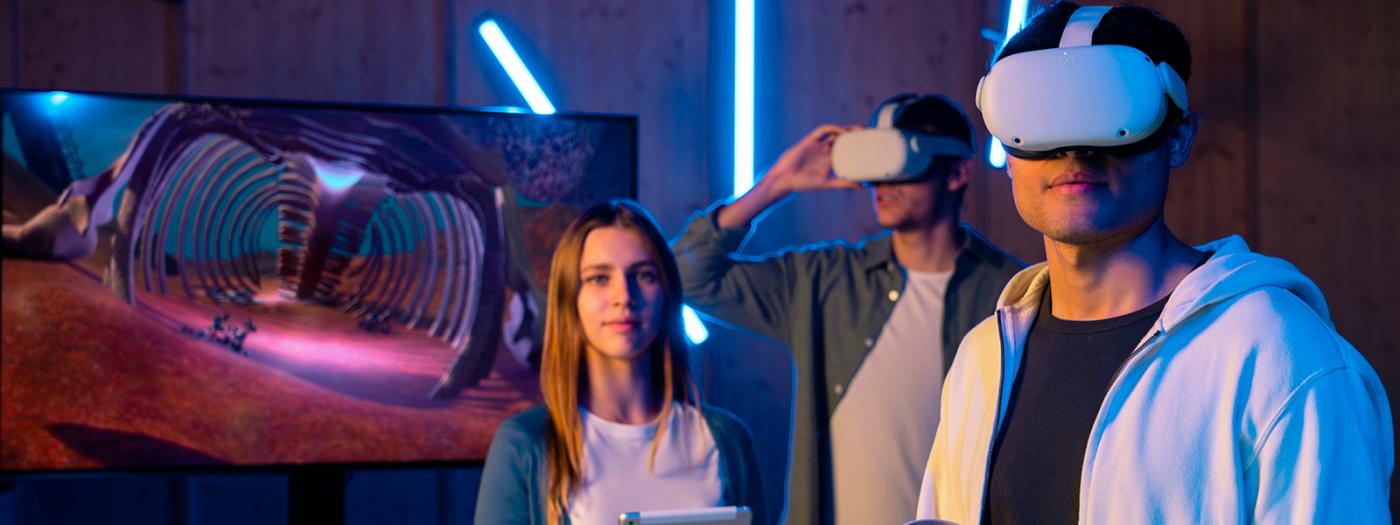Nowadays it is very difficult to find any means of communication that do not include digital support. The audiovisual content that we use and consume for communication, leisure and infotainment has acquired a fundamental role in our daily lives. But behind this content, professionals with knowledge in the field are required to create it.
This subject gives students digital tools that allow them to express themselves through image, colour, composition, movement and digital cinematography in general.
The student acquires the theoretical foundations and practical knowledge necessary to generate, transform digital images and assemble complete audiovisual pieces. The student learns to create presentations, movie posters, retouch images, compose 2D / 3D shots, prepare Color Keys and create their own personal Show Reel with a fast and optimal workflow.
Titular Professors
Professors
- Conocer los conceptos de captación y fotomontaje
- Retocar, manipular e iluminar una imagen.
- Crear composiciones de imagen y vídeo.
- Crear diseños y contenidos audiovisuales para una producción real.
- Aprender a crear una reel personal para ganar visibilidad en el mercado profesional.
Theoretical bases
Concepts and tools
Digital Color
Photomontage
Effects
Selection and transformation modes
Blending modes
Adjustment Layers
Masks
Photo retouching
Camera and features
Composition rules
Treatment of the light,
Video & audio editing
ShowReel
It works through different active teaching methodologies and project-based learning. Although there are Master Classes, the demonstrative and practical ones predominate. These are carried out by the students individually with the continuous supervision of the teacher.
At the beginning of each session, any doubts that resulted from the previous practice or session are resolved.
Afterwards, the theoretical-practical part is discussed so that students have the knowledge and tools necessary to develop the approaches and achieve the new goals.
Didactic activities are offered with specific audiovisual material to become familiar with the technical vocabulary and develop their professional growth through practice and experience.
At the beginning of the course, the exercises that make up the continuous assessment of the entire semester and the route to follow to achieve the purpose of the subject are presented.
Throughout the course, the student receives individual and group feedback to evolve and have the opportunity to rectify, improve their work and have constant growth in their learning.
REGULAR EVALUATION:
Continuous Evaluation: 100%
Delivery of exercises, student participation in class and teacher's criteria.
To pass the delivery of the exercises, the weighted average must be equal to or greater than 5.
Some practices are publicly corrected to share them and collectively learn from the successes and errors of all students. If the student delivers the exercises without respecting the delivery bases, the grade will be negatively affected.
EXTRAORDINARY EVALUATION:
Those students who do not pass the ordinary session will have the option of passing the course in the extraordinary evaluation session.
EVALUATION CRITERIA FOR ALL CALLS:
If the delivery of the exercises is not carried out on the date established by the teacher, the subject will be failed
The final grade for each exercise will be binary (approved / not approved), depending on the good or bad application and the established requirements.
Exceptions will be allowed when the causes of these absences are justified. In that case, the teacher will set a new individual delivery date for the particular case, as long as the school calendar allows it.
BERGER, J. 2000. Modos de ver. Barcelona: Gustavo Gili.
BROWN, B. 2014. Cinematografía. Teoría y Práctica. Ed. Barcelona: Omega.
HELLER, E. 2004. Psicología del color. Barcelona: Editorial Gustavo Gili.
JARDÍ, E. 2012. Pensar con imágenes. Barcelona: Ed. Gustavo Gili.
LANGFORD, M. 2001. Fotografía bàsica. Barcelona: Ed. Omega.
SHAEFER , D. I SALVATO, L. 1990. Maestros de la Luz. Madrid: Plot Ediciones.
TORNQUIST, J. 2008. Color y Luz. Teoría y Práctica. Barcelona: Ed. Gustavo Gili.
Adobe Photoshop: https://creativecloud.adobe.com/es/discover/learn/app/photoshophttps://creativecloud.adobe.com/es/discover/learn/app/premiere-prohttps://forophotoshop.com/https://videoedicion.org/foro/https://www.hispasonic.com/foros/alguna-comunidad-adobepremiere-internet...
